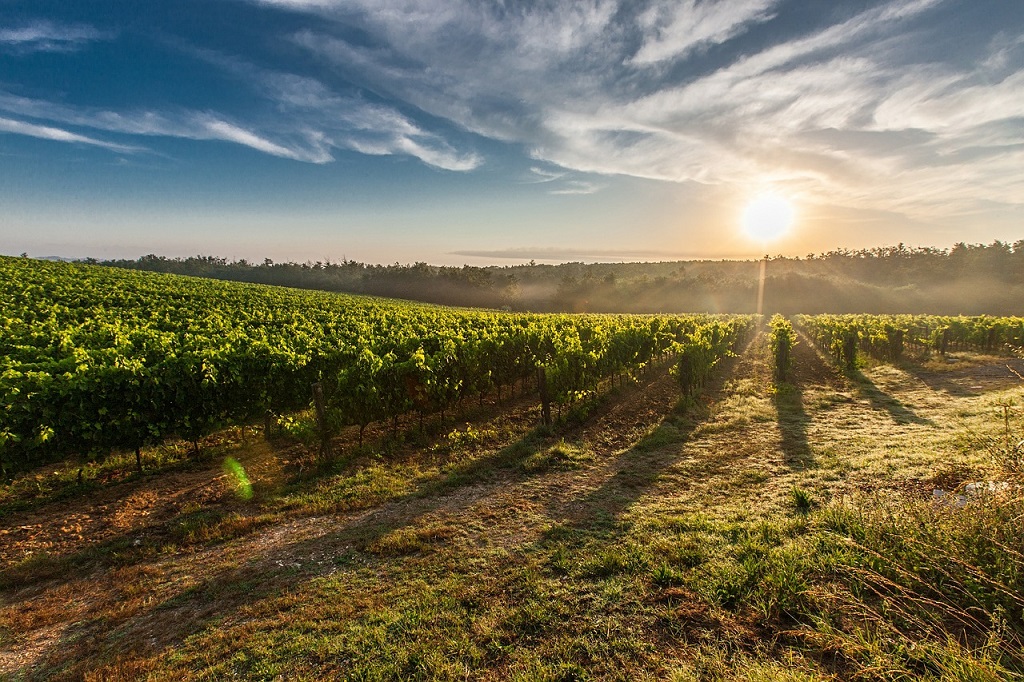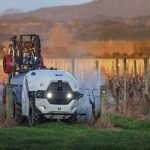Image credit: weed.review – https://weed.review/
Cutting-edge technological advancements are aiding more industries to achieve better results, including Australia’s agricultural sector.
In viticulture, artificial intelligence and Internet of Things technologies are transforming how processes are done, and making them easier to manage.
Journalist Samuel Squire sat down with one leading agtech provider to find out how their products are benefiting wine producers.
Artificial intelligence (AI) is making its presence known more and more across today’s technologies. And, as technology advances to aid people over time, it becomes more integrated with how we function.
In viticulture, advancements have been introduced that use high-resolution satellite imagery and artificial intelligence to provide spatial insights in vineyard operations.
Precision viticulture tools utilising cutting-edge technologies like 5G connectivity and IoT (Internet of Things) are helping grapegrowers keep track of what is happening in their vineyards, by providing data to help solutions to be found for issues that may arise.
Technological innovations like GAIA, an AI viticulture tool that enables producers to more effectively monitor soil moisture, and assess fruit quality and vine performance through canopy observation, are aiding growers boost performance and profit while reducing costs.
More recently, a holistic hub for AI and IoT technologies called Green Brain has been made available to the wine sector. It was such a success that the technology has been acquired by Consilium Technology as part of an integration project the company is undertaking to centralise agtech tools for producers.
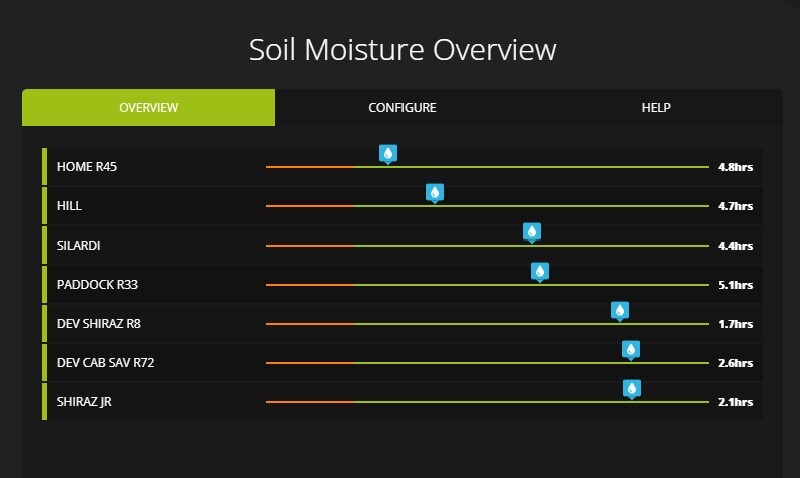
Green Brain uses weather stations and soil moisture probes to record data and send it back to the cloud, for growers to access through a digital hub.
According to Consilium Technology CEO Seth Thuraisingham, Green Brain enables growers to quickly see when to next irrigate and will calculate how long the next irrigation should run in order to refill the active root zone.
“This helps optimise growers’ water use by showing them how much could be applied without pushing water or nutrients past the active root zone,” Thuraisingham explained.
Thuraisingham says that, currently, there are four products within the Green Brain ecosystem on the market available to the grower:
- Entry level GDot – displaying current soil moisture visually – but no connection to the cloud;
- Low cost soil moisture tension data that logs to the cloud via Bluetooth or 5G options;
- Premium soil moisture content data that logs to the cloud via Bluetooth or 5G options; and
- 5G weather stations, which have in-canopy and mini variants with options for leaf wetness.
The tech company CEO says their plan over the coming months is to expand Green Brain’s potential and integrate more systems, like GAIA, into the software as part of the company’s plan to integrate AI and IoT agricultural technologies.
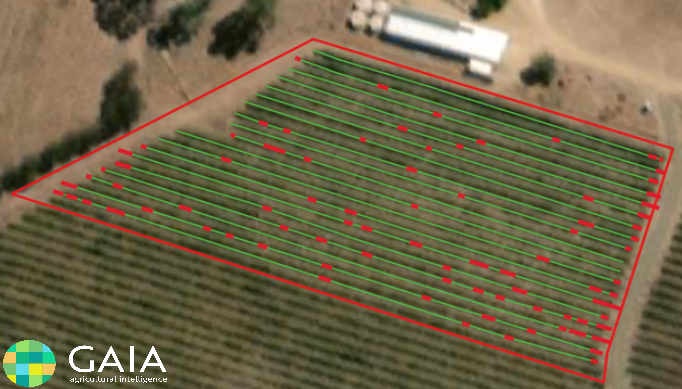
Combining soil, weather and satellite data
“The vision for Green Brain is the combination of soil, weather, and satellite data through a smart AI platform which hides all the complexity of IoT, robust 5G networking and cloud computing from the grower,” he said.
“The result is a complete holistic decision making tool that is easy to use and interoperable with the other tools that the grower has to use, such as their spray diary.
“Over the next 12 months, Green Brain and GAIA will be integrated into one product – Green Brain – giving growers, producers and winemakers access to the benefits of both products and services in one integrated place.
“GAIA has already completed an integration with a widely used spray diary tool, which will most likely roll-out in the next off-season.”
Thuraisingham says the Green Brain product will remove some of the guess work often entangled with viticulture, as well as provide many other benefits to growers, including the ability to ultimately reduce costs and improve profits.
“The Green Brain-GAIA integrated ecosystem will help growers reduce water consumption, improve irrigation effectiveness, increase yields or yield quality and reduce some of the risks and uncertainties of viticulture,” he said.
Working as a precision viticulture tool, Thuraisingham says the Green Brain ecosystem will be a considerable tool for growers to make use of, given its expanding potential.
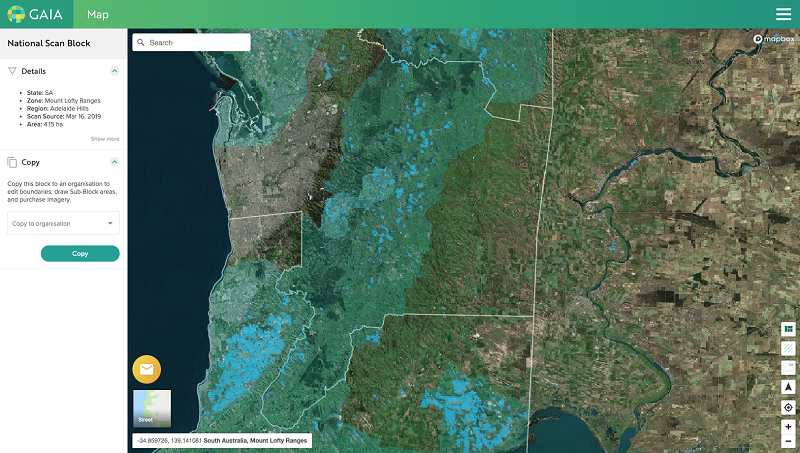
He says imagery delivered by GAIA can currently be used to target variations in vigour with different management approaches “such as harvest timing, pruning methods and identifying irrigation leaks”.
“The canopy gap detection we are finalising provides growers a measure of lost productivity in their vineyards, which can ensure targeted responses to issues such as trunk disease. A grower will understand total lost production across a block and where each individual loss occurs.
“Integrating the Green Brain soil moisture and weather data with this spatial imagery will enable us to provide tools to increase a grower’s confidence in their irrigation management.
“Initially, this can be achieved using the accurate canopy coverage that GAIA provides to generate an individual assessment of water requirements for each vineyard block. This is often done with low resolution imagery, which introduces errors by factoring in water requirements of the interrow, for example.
“That’s where the advantages of using high resolution imagery, and GAIA’s analytics really come into play, because once there is a relationship between canopy structure, soil moisture, and local weather conditions for a specific vineyard, then the water use requirements can begin to be resolved at the level of a vine row or even down to an individual vine and how that differs from those either side of it.
“That just isn’t possible with the low-resolution imagery products that have been developed for broad acre initially, because they don’t account for the variation on the ground within a vineyard.”
He adds that the evolution of Green Brain doesn’t end there, but also will continue to expand its applications.
Sharing map data
“We are also working with the open mapping community through our #Collabriculture initiative to develop and define the standard for sharing map data in viticulture,” he said.
“We are also working towards initiating a national mapping initiative to develop maps for all Australian crops, which will involve multiple government agencies, universities and private mapping suppliers.”
So far, an initial survey of user feedback on Consilium’s newly-acquired system is giving it a promising future.
“We conducted a user experience survey across 80 to 100 of our customers,” Thuraisingham said, “The results indicated that Green Brain has been developing as a trusted brand in the industry”.
“Questions around ease-of-use and quality of information all scored very highly. Previous product iterations developed have lasted infield for over 20 years.
“GAIA is a little younger in its development life cycle; this is just our third season in operation. We conducted a user experience study in McLaren Vale last season and the feedback from that was excellent in helping us better understand what users are looking for.
“This has been added to our road map, and will shape the user experience design of the next generation of the Green Brain product.”
Thuraisingham concluded that Green Brain will continue to be expanded upon as a grower tool, and that there is scope for regional data to be captured as well.
“There is scope to provide: regional based irrigation forecasts and work with water infrastructure bodies to deliver water to regions in a more cost effective manner; regional based yield potential estimates via the automated measurement of canopy gap using high-resolution imagery; and regional insights on crop productivity metrics in the future.”
This article was originally published in the January 2021 issue of the Australian & New Zealand Grapegrower & Winemaker. To find out more about our monthly magazine, or to subscribe, click here!
Are you a Daily Wine News subscriber? If not, click here to join our mailing list. It’s free!

